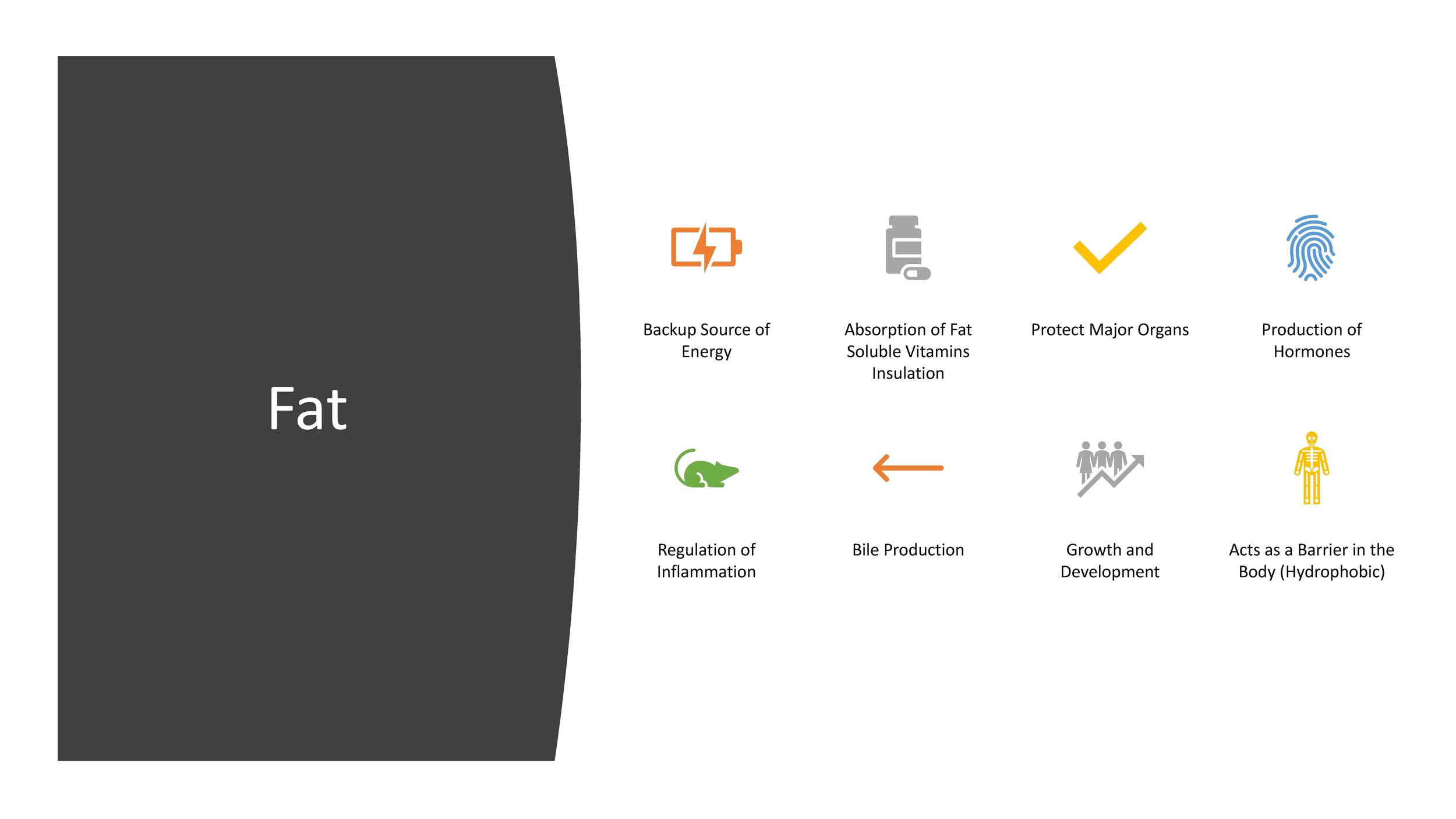Nutrition
3 Macronutrients: Protein, Carbohydrates, Fats
Proteins- Building blocks of bodily tissues such as muscles, tendons, blood vessels, skin, hair, and nails; Synthesize and maintain enzymes and hormones
Carbohydrates- Essential for our primary source of energy (fuel): Brain Function
Fats- Backup Source of Energy
Protein
The functions of protein include:
Building blocks of body tissues, like muscles, tendons, blood vessels, skin, hair, and nails
Synthesizing and maintaining enzymes and hormones
Preventing illness through the creation of antibodies
Providing energy through gluconeogenesis
Examples of protein sources and their amounts of protein
Fish: 3-4 oz contains 19-25 grams of protein
Poultry: 2-3 oz contains 14-21 grams of protein
Beef: 2-3 oz contains 14-21 grams of protein
Pork: 2-3 oz contains 16-24 grams of protein
Tofu: 4 oz contains 10 grams of protein
Dairy: 1 cup of milk contains 8 grams of protein
Eggs: 1 egg contains 6 grams of protein
Carbohydrates
The roles of carbohydrates:
They are essential for our primary source of energy, particularly for brain function.
They are involved in the operation of organs.
They contribute to intestinal health and waste elimination, particularly through fiber.
They help regulate digestion and utilization of fats, and provide short-term energy by increasing blood glucose.
They are a source of long-term energy storage in the form of glycogen.
Examples of carbohydrate sources and their contents:
Rice: 1/2 cup cooked contains 22 grams of carbohydrates
Pasta: 1/2 cup cooked contains 20 grams of carbohydrates
Fruits: 1 medium fruit contains 25.5 grams of carbohydrates
Potato: 1 medium potato contains 26.6 grams of carbohydrates
Dairy: 1 cup of milk contains 12.8 grams of carbohydrates
Legumes: 1/2 cup cooked contains 30 grams of carbohydrates
Fats
The functions of fat:
It serves as a backup source of energy.
It is necessary for the absorption of fat-soluble vitamins and provides insulation.
It protects major organs.
It is involved in the production of hormones.
It plays a role in the regulation of inflammation.
It is crucial for bile production.
It supports growth and development.
It acts as a hydrophobic barrier in the body.
Examples of fat sources and their fat content:
Oils: 1 tablespoon contains 14 grams of fat
Nuts: 1 oz contains 15 grams of fat
Avocados: 1/2 avocado contains 15 grams of fat
Dairy: 1 cup of whole milk contains 8 grams of fat
Eggs: 1 egg contains 5 grams of fat
Fresh Produce & Pantry List From Wright Way Nutrition
Each week
Choose 3-4 meats to have (include fish)
Choose 3-5 fruits: some for snacking and pre & post training
Complex carbs: choose potatoes, vegetables, or rice/quinoa
Choose 5 vegetables to have refrigerated throughout the week
For any other questions, reach out to Maya at
1st Phorm App Walkthrough
For me to guide you with your nutrition, start using the 1st Phorm App today!
This walkthrough gives a surface level view of what the app has to offer.
Link for app: https://www.1stphorm.app/CoachDJTaylor








